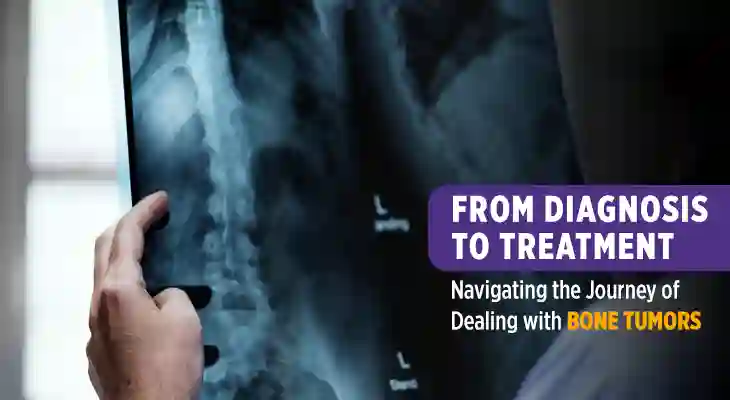From Diagnosis to Treatment: Navigating the Journey of Dealing with Bone Tumors
What are Bone Tumors?
Bone tumors are abnormal growths that occur within the bones. It can be benign (non-cancerous) or malignant (cancerous). Benign bone tumors typically grow slowly and do not spread to other body parts, while malignant bone tumors can invade nearby tissues and metastasize to distant sites.
These tumors originate from different types of cells found in our bones, such as osteoblasts (cells that form new bone), osteoclasts (cells that break down old bone), or other specialized cells. Bone tumors fall into three main categories: Ewings Sarcoma, Osteosarcoma, and chondrosarcoma. They are more common in adolescents and young adults, with frequency decreasing in later years. Though bone tumors are rarer than other malignancies, they constitute the third leading cause of cancer death in young individuals.
What are the sites of Bone tumors?
Bone tumors can occur throughout the musculoskeletal system.
Osteosarcoma: Most common site is distal femur(32%) cases, followed by proximal tibia(15%), proximal humerus and proximal femur
Ewing’s Sarcoma: Most common site is pelvis or sacrum(22%), Proximal femur (10%, )shoulder girdle (12%), ribs
Chondrosarcoma: The most common site is the Pelvis or sacrum (26%), followed by the shoulder girdle (14%), proximal femur, and ribs
What are the most common symptoms of bone tumors?
The most common presentation of bone tumors often begins with complaints of deep-seated discomfort or pain, which the patients often ignore. This is often followed or accompanied by swelling in the involved region. As the disease progresses, the patient may present with a pathological fracture, which is often caused by trivial trauma. As the disease progresses and becomes metastatic, the patient may complain of dyspnea, hemoptysis etc.
How do we investigate the disease?
Workup for the disease often begins with a simple X-ray of the involved bone. This is often followed or accompanied by a PETCT whole body to see for the local and distant metastasis. A biopsy often accompanies this to find the exact subtype of the bone tumor.
What are the treatment modalities for bone cancer?
Bone cancer is usually treated by a combination of chemotherapy and surgery, with radiation offered in a few cases. Usually, the treatment begins with intensive chemotherapy. Based on the response to chemotherapy, the patient is often taken up for surgery, followed by adjuvant chemotherapy. In a metastatic setting, chemotherapy remains the only option.
Accord Superspeciality Hospital has the highly experienced team of oncologist offering the treatment modality.


